The Moral Cost of Cats
A bird-loving scientist calls for an end to outdoor cats “once and for all”
/https://tf-cmsv2-smithsonianmag-media.s3.amazonaws.com/filer/f5/72/f5723c57-b8c0-48a1-bf7c-aaa4c2d918fd/ax50mk.jpg)
Pete Marra is haunted by cats. He sees them everywhere: slinking down alleys, crouched under porches, glaring at him out of wild, starved eyes.
People assume that Marra, head of the Smithsonian Migratory Bird Center and author of the recent book Cat Wars, hates cats. This is not the case. “I love cats,” he says, calling them “fascinating, magnificent animals,” that seem to have a “freakish love for me.” He’s even considered a pet cat, despite being mildly allergic. “This is the thing people don’t realize,” Marra told me recently at a café near his office in Washington, D.C. “I’m both a wild animal advocate and a domestic animal advocate. If my mother thought I wasn’t supporting cats, she’d be flipping in her grave.”
It’s an understandable mistake. After all, Marra has made himself the public face of what sounds a lot like an anti-cat crusade. For years, the wildlife ecologist has been investigating the lethal implications of cats and urging that pet owners keep them indoors. Now, he argues in Cat Wars: The Devastating Consequences of a Cuddly Killer, co-authored with freelance writer Chris Santella, the time has come for more drastic action: a concerted, nationwide effort to rid the landscape of cats. (The book is based on Marra’s personal and scientific research, and the views and conclusion are expressly his own and do not represent those of the Smithsonian Institution.)
That effort will require an ugly reality: the targeted killing of felines. “No one likes the idea of killing cats," Marra concludes in his book. "But sometimes, it is necessary."
Marra might like cats. But he also sees a bigger picture. In his day job, he and his team at the migratory bird center track the global movements of birds and tease apart threats to their existence. He knows that birds don’t just twit around pointlessly. They pollinate plants, spread seeds, control insects and protect environments from the effects of climate change; they are the glue that binds healthy ecosystems together. “Birds are critical,” he says. And outdoor cats, he and other ecologists have determined, are the leading human-influenced cause of dead birds.
In 1962, biologist Rachel Carson wrote that “in nature nothing exists alone.” Marra couldn’t agree more. Like Carson, he thinks of life on Earth as a complex tapestry in which each species represents a single thread. Outdoor cats threaten that tapestry. Their crimes include contributing to 33 extinctions around the world and counting, to say nothing of their potential to spread deadly diseases like rabies and Toxoplasmosis. They hold in tooth and claw the power to destroy that delicate web—like, well, a cat unraveling a ball of string.
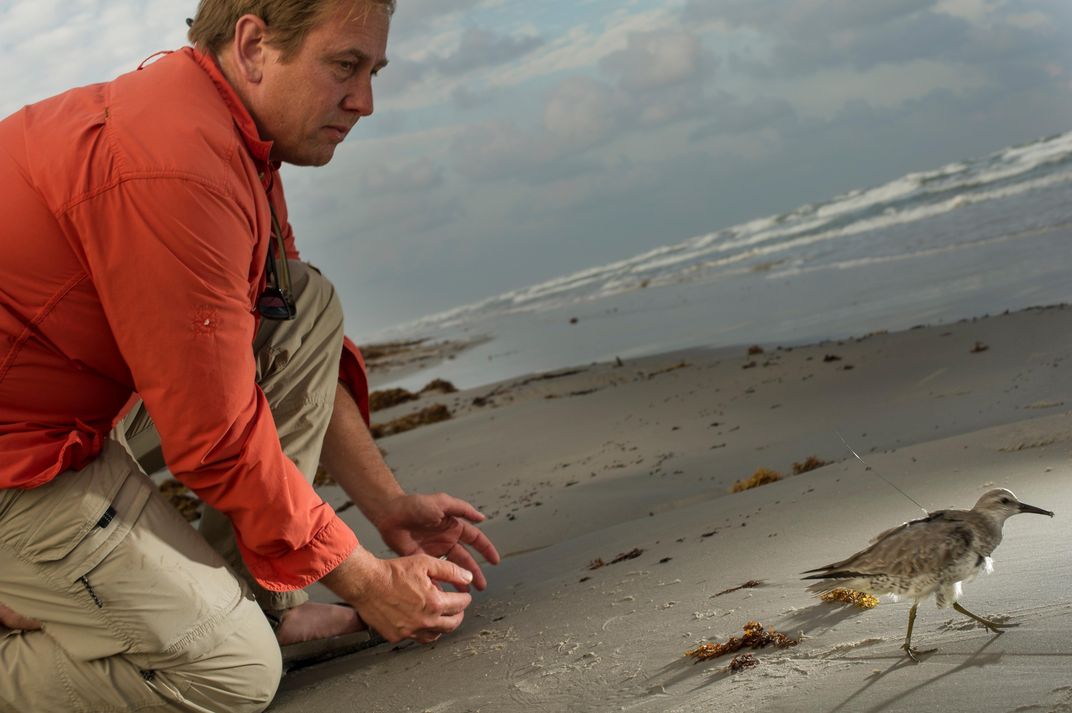
Measuring the outdoor cat problem
Americans own about 86 million cats, or one cat for every three households. That makes cats more popular, petwise, than dogs, and we haven’t even gotten to Internet memes yet. But not all pet cats are created equal. The majority of them—about two-thirds to three-fourths, surveys say—are your sweet, harmless, cuddly housecats, which seldom set foot outside. Marra takes no issue with these lap cats. Their instincts may be lethal, but they rarely get the chance to harm more than a house mouse.
The other one-quarter to one-third, though, aren’t so harmless. These are outdoor pet cats, and they are murderers. Equipped with laser-quick paws and razor-tipped claws, these natural born killers are the stuff of every bird and small mammal’s nightmare. Often we love them for just this quality; the hard-working barn cat has nipped many a country mouse infestation in the bud. But sometimes their deadly instincts spell trouble for animals and ecosystems we value—and often, Marra argues, desperately need.
Marra tells the story of Tibbles the cat, who traveled with her owner to an untouched island south of New Zealand in 1894. There, she single-pawedly caused the extinction of the Stephens Island wren, a small, flightless bird found only in that part of the world. Most cats aren’t as deadly as Tibbles, but your average outdoor pet cat still kills around two animals per week, according to the Wildlife Society and the American Bird Conservancy. The solution for these cats is simple, says Marra: Bring them indoors. The Humane Society of the United States agrees.
So far, so good. Now comes the real problem: unowned cats, which include strays and ferals. Born in the wild or abandoned, feral cats spend almost no time with humans; they’re basically wild animals. Stray cats, by contrast, often have a working relationship with humans. They might live in managed communities, where a human caretaker regularly feeds and watches over them—“subsidizing” them, in Marra’s words—meaning their numbers can soar to rates they wouldn’t be able to otherwise. Whether stray or feral, these cats kill on average three times as many animals as owned cats, according to Marra.
No one knows exactly how many stray and feral cats stalk the U.S. They are, by nature, elusive and transient. In a 2013 study, Marra used an estimate of 30 to 80 million; the Humane Society estimates a more conservative 30 to 40 million. Adithya Sambamurthy from the Center for Investigative Reporting’s Reveal recently reported that unowned cats may rival the number of pet cats, placing them at about 80 million. That means, for every lap cat hunkering over his dish of Fancy Feast, there is another one prowling around for his dinner—like an evil twin, or a particle of antimatter.
For these cats, there is no easy solution. This is where Marra’s unorthodox plan comes into play. As he writes:
In high-priority areas there must be zero tolerance for free-ranging cats. If the animals are trapped, they must be removed from the area and not returned. If homes cannot be found for the animals and no sanctuaries or shelters are available, there is no choice but to euthanize them. If the animals cannot be trapped, other means must be taken to remove them from the landscape—be it the use of select poisons or the retention of professional hunters.
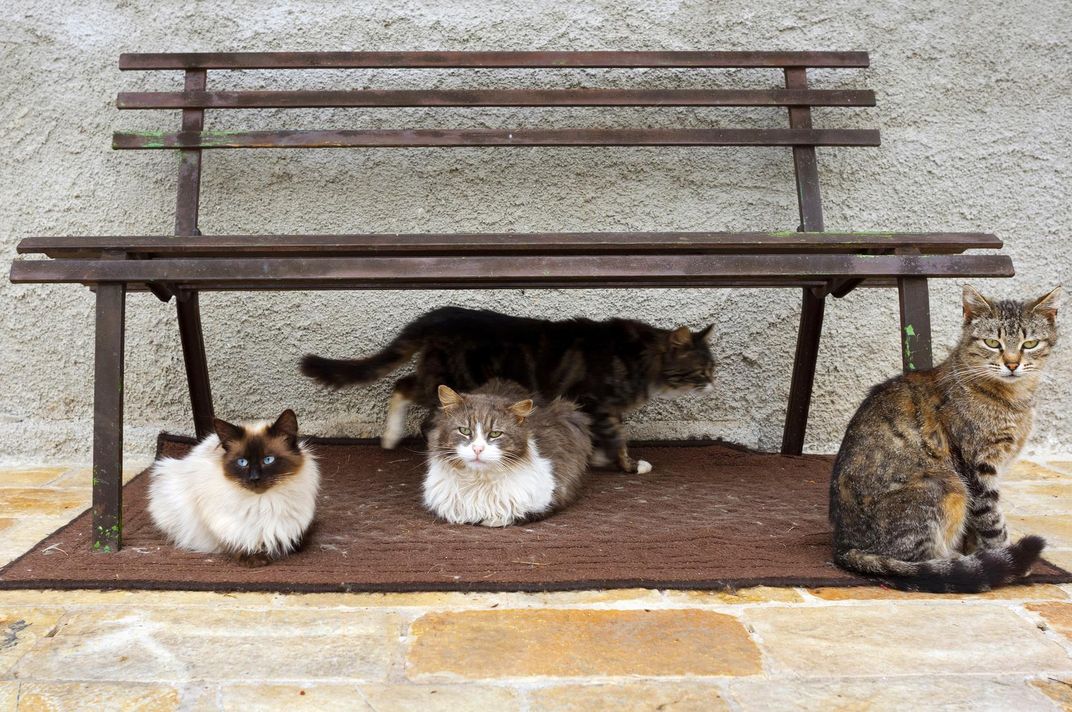
Feral cat advocates and ecologists agree on very little. But one thing they both will say is this: There are too many cats outside. Feral cat advocates say these dense numbers threaten the welfare of cats themselves, which lead miserable lives colored by fights and starvation. Ecologists, meanwhile, worry about those cats’ victims—as well whether the cats might be spreading disease to humans and other animals.
How to shrink the outdoor cat population
Management of these overabundant felines is a point of contention. For many animal welfare advocates, the solution is TNR, Trap-Neuter-Release or -Return. TNR is just what it sounds like: a policy that involves trapping stray and feral cats, sterilizing them and returning them to the urban wilds in the hopes that populations will decrease. In the past decade, TNR has gone mainstream in many cities, helped along by generous funding from pet food companies including Petco and PetSmart. The premise is simple: Cats live out their lives, but don’t reproduce.
A trap-neuter-release program is being tried out for New York’s feral cats. #W42ST https://t.co/PqIDUvdBDE
— W42ST (@w42st) June 12, 2023
Becky Robinson, president of the advocacy group Alley Cat Allies and a major proponent of TNR, calls the method “effective, humane control.” “This is a benefit directly to the cats,” she told me over the phone. (Two communications staffers from Robinson’s organization were listening in on our conversation, to give you an idea of the delicateness of the topic.)
Some researchers have documented surprising successes with TNR. Dr. Julie Levy of the University of Florida in Gainesville and colleagues conducted one of the first long-term studies on the effectiveness of TNR, publishing their results in the Journal of the American Veterinary Medical Association in 2003. They sought to quantify whether TNR could succeed in a specific population: stray cat colonies on the campus of the University of Central Florida.
The researchers expressed doubts at the outset, reporting that “virtually no information exists to support the contention that neutering is an effective long-term method for controlling free-roaming cat populations.” Yet today, more than ten years after their study concluded, just five cats remain on campus—and these are so old and sickly they have to be given geriatric care. Even Levy was taken aback by the results. “We keep seeing better success in the field than the models ever predict,” she says. However, much of the decrease can be attributed to the fact that volunteers often end up adopting cats—a phenomenon Levy considers an unofficial part of many TNR programs.
Despite these kinds of successes, many ecologists say flatly that TNR doesn’t work. The problem is that, for TNR to succeed in large populations, at least 75 percent of cats in a colony must be sterilized. That rarely happens. The trouble is that negligent pet owners continue to abandon pet cats, which then join existing colonies; additionally, non-neutered stray cats can wander in. Like efforts at vaccinating schools against chickenpox, just a few stragglers can undermine an entire TNR program. Any short-term reduction in colony size is therefore quickly reversed, a group of researchers including Levy and ecologist Patrick Foley reported after studying nearly 15,000 stray and feral cats.
For Marra, TNR is a feel-good solution that is no solution at all—a Band-Aid that has done little to stem the flow of cats. By refusing to look at the reality, he says, we are letting our “misplaced compassion” for cats get the better of our reason. That is why he and some other ecologists call for a more draconian approach: widespread removal of feral and stray cats, including euthanasia.
The concept isn’t as radical as it sounds. Australia aims to kill two million cats by 2020 using “robots, lasers, [and] poison.” New Zealand, as I’ve reported previously, has long perpetrated mass warfare on possums, stoats and weasels in a bid to save its beloved birds. In America, too, we cull mammals—including gray wolves, which can prey on livestock and pets, and bison, our national mammal, which can spread bacterial infections to cattle. We even kill cats: American shelters put down more than 1.4 million cats a year, according to the American Society for the Prevention of Cruelty to Animals.
That doesn’t mean we’re comfortable with it. “That’s the aspect that is most alarming about the animal welfare groups, is the fact that often the only reasonable solution of getting rid of invasive species is lethal control,” says Stanley Temple, a wildlife ecologist who argued for the necessity of eradicating invasive species in a 1990 essay The Nasty Necessity. “And that is the single thing that they are so vehemently opposed to. Their hang-up, if you will, on death.”
Given the unpopularity of eradication programs in the U.S., it would seem inadvisable for any researcher to make one part of his platform of action. But this, Marra says, is our only option. Now his challenge is to get others on his side. To do so he will need more than science—he will need to get people to empathize with birds, and to value species and ecosystems over individuals.
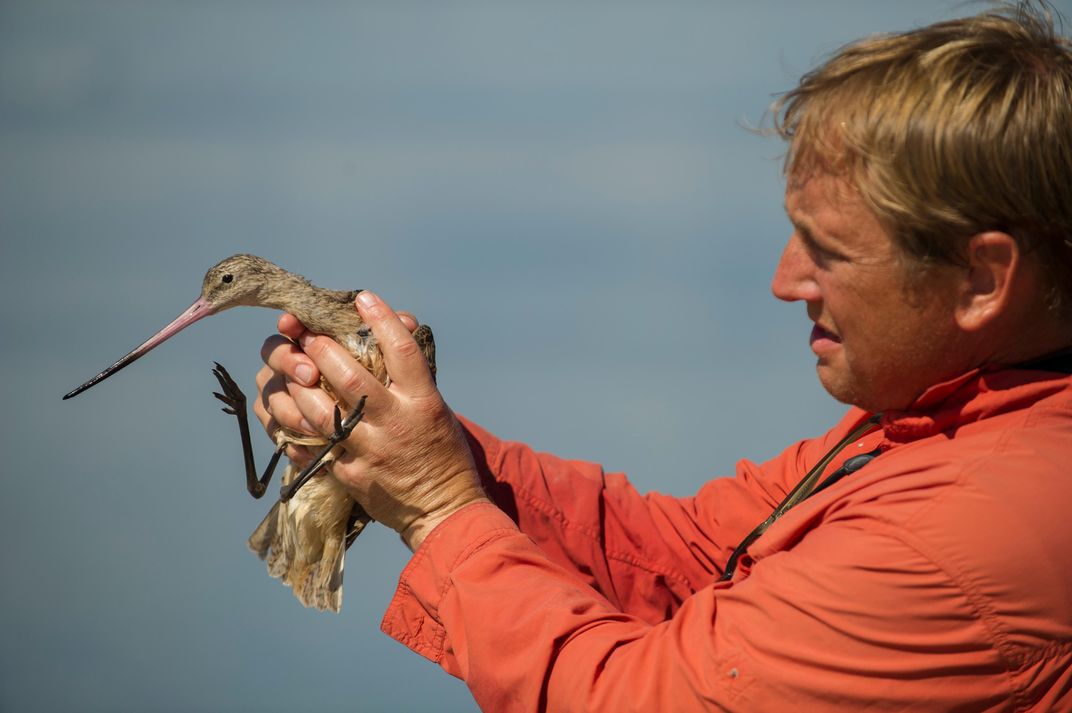
The birds: outdoor cats’ frequent victims
Marra likes to say that birds saved him, which isn't far off. He was raised mainly by his mother, who worked full-time to support him and his three siblings after his father left when he was an infant. As a result, he enjoyed a relatively feral childhood. By the time he was six, he found himself wandering alone in the woods near his house in Norwalk, Connecticut, swimming in lakes, climbing trees and digging in the dirt for star-nosed moles, frogs and salamanders. He loved catching animals of all kinds—“anything wild,” he says now.
The Westport Nature Center, a half-mile walk down the hill from his house, became a refuge. With its living wild animals and displays of taxidermied ruffed grouse, the center got Marra asking questions about how his surroundings came to be. One day, a naturalist at the center caught a black-capped chickadee in a mist net and placed it in his hands. He remembers cupping the bird delicately, “looking into its eyes, feeling its feathers, feeling its wildness,” as he recalled at a Smithsonian event last June. Meeting the bird’s black marble gaze, a switch flipped in his brain.
“It was a remarkable moment that I’ll never forget,” he said at the event. “The aura of the bird almost entered my body. It was really kind of a transformational experience for me.”
Throughout a tumultuous childhood, birds provided an anchor. “Birds saved me, because they were always this constant thread that I could come back to,” he says. “It was the one stable thing in my life.” When he went to Southern Connecticut State University to study biology, he quickly realized that dusty specimens in libraries held little appeal. “I was less interested in understanding the subtleties between plumages,” he says. “I was much more interested in watching live birds.”
In 1999, Marra took a job as a wildlife ecologist at Smithsonian's Environmental Research Center to be on the front lines of human encroachment on the natural environment. When West Nile virus began leaving a trail of dead crows, he started looking into bird mortality. In 2011, he published a paper in the Journal of Ornithology that followed the fate of young gray catbirds in the Maryland suburbs. Soon after leaving the nest, 79 percent of birds were killed by predators, primarily cats, which leave the telltale sign of decapitated victims with just the bodies uneaten. (Ironically, this bird gets its name not because it commonly ends up in the jaws of cats, but from its vaguely catlike yowl).

The following year, Marra got more ambitious: He decided to tally up the national toll that outdoor cats take on wildlife. He and colleagues used mathematical models to analyze data from local cat predation studies going back more than 50 years. When they extrapolated the data to reflect national trends, they were stunned. According to their calculations, outdoor cats killed somewhere in the ballpark of 2.4 billion birds and 12.3 billion small mammals in the U.S. per year—far exceeding any other human-influenced cause of avian death, such as pesticides or collisions with windows.
Cat-lovers and birders clash over solutions
When Marra saw the number “2.4 billion,” he knew that the claws were about to come out. He was right. On January 29, 2013, the same day the paper was published in the journal Nature Communications, the New York Times featured a front-page article highlighting his findings entitled “That Cuddly Killer Is Deadlier Than You Think.” The piece became the newspaper's most-emailed article of the week. It garnered more than a thousand comments online, ranging from outraged (“I'm tired of everyone putting down cats and trying to justify their extermination”) to pointed (“It’s the large bipeds who are the problem, not their cats”) to satirical (“Eat more cat!”).
Marra read them all. Many were personal insults directed squarely at him. Some suggested that he should be predated or euthanized. Marra understands how emotional people can get about cats—he has entered into many a dinner table debate with his 15-year-old daughter, a long-time vegetarian and animal lover, over cat policy—so he tries to take these reactions with a grain of salt. Still, he admits, “it hurts.” When I ask him how he deals with the constant backlash, he laughs. “Good question,” he says. “It’s actually because I believe in what I do. And if I don’t do it—well, I’ve got one life. This is it. This is the now.”
More bothersome than the personal attacks were the attacks on his research methodology. The most relentless was Peter Wolf, a vocal feral cat advocate who called Marra’s paper “garbage,” “junk science” and “an agenda-driven effort to undermine TNR” on his blog, Vox Felina. Wolf took issue with the levels of uncertainty in Marra’s paper, alleging that the numbers were “wildly inflated,” came from biased sources and drew upon just a handful of studies. “When seen in context, these astronomical figures alone raise questions of credibility,” Wolf wrote on his blog. “It doesn’t seem like science to me,” he told me recently.
It was, Marra admits, a wide range. He and his colleagues estimated that “free-ranging domestic cats kill 1.3–4.0 billion birds and 6.3–22.3 billion mammals annually.” The reason for the vast range was the woeful lack of data on feral cat populations and their lifestyles. Marra worked with the limited data he had, synthesizing the results from previous studies and augmenting them with predation numbers from Europe, Australia and New Zealand. By including both the lowest and highest possible estimates for cat predation, he thought he was covering all his bases.
In all the fighting and flying fur, Marra saw an opportunity. By the time his paper was published in Nature Communications, he was already thinking about writing a book. “I knew this had huge potential for creating a lot of controversy,” he says. “But also conversation. To me, it’s really about the conversation and trying to figure out: how do we come to some resolution on this thing?”
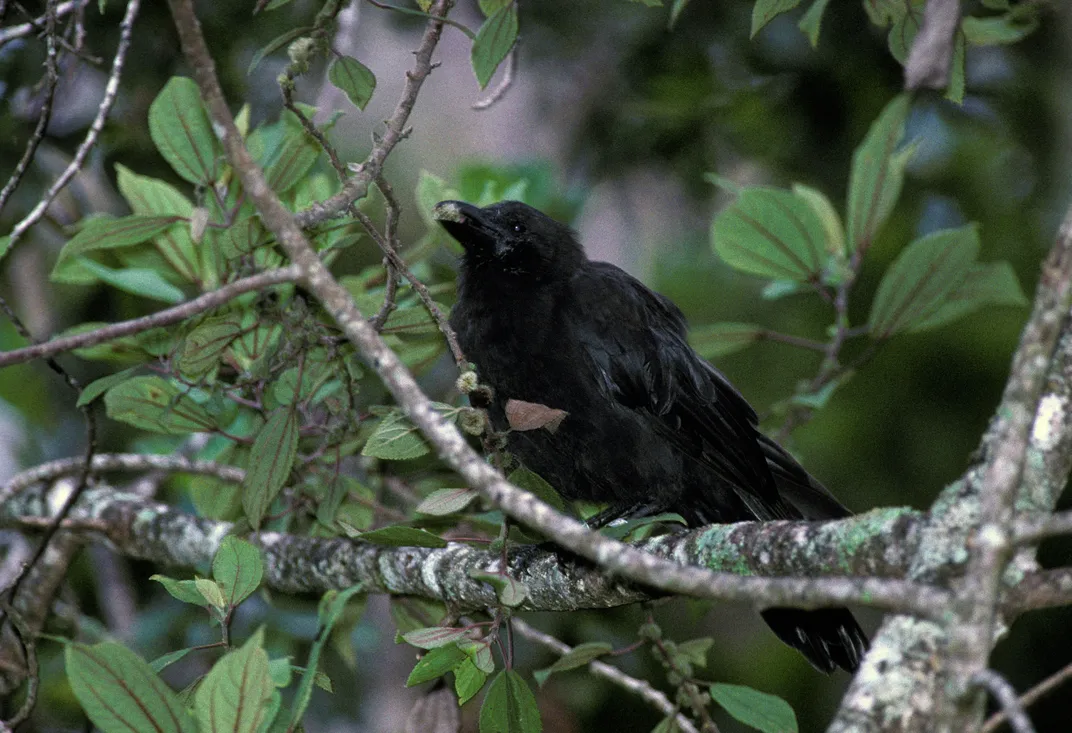
Cats kill; that much is clear. “The science is all pretty bloody obvious,” as Michael Clinchy, a Canadian biologist focusing on predator-prey relationships at the University of Victoria, puts it. But cats also spread disease. Outdoor cats can transmit plague, rabies, feline leukemia and a mysterious parasite known as Toxoplasma gondii. The extinction of the Hawaiian crow, or ʻalalā, in 2002 is thought to have been caused in part by the spread of Toxoplasma via feral cats. “The diseases from cats is what’s going to change this whole equation,” Marra says.
Four years after their reintroduction, the Hawaiian Crow is extinct in the wild once more: https://t.co/hkBl8FnaNj @kimsrogers pic.twitter.com/845Wt7qkMH
— Audubon Society (@audubonsociety) October 17, 2020
Parasites: cats’ invisible weapons
Cat feces, 1.2 million tons of which are excreted a year, are known to contain Toxoplasma. The single-celled parasite enters the brain and changes the behavior of prey animals like rats, which can show a strange attraction to cat urine. About 10 to 20 percent of Americans also harbor the parasite, which can be absorbed through contact with litter boxes, drinking contaminated water or eating undercooked meat. Once believed to hang out harmlessly in the human brain, some scientists now believe that Toxoplasma may actively change the connections between our neurons—shifting dopamine levels, altering personalities and even triggering diseases like schizophrenia in genetically susceptible individuals.
Marra calls Toxoplasma a contaminant on the order of DDT, the broad-scale chemical pesticide used to control insects and combat infectious disease up until the 1960s. (DDT lingers in the environment for years, where it can threaten human and animal health, as Rachel Carson documented in her book Silent Spring.) In fact, Marra thinks of outdoor cats themselves as a DDT-like contaminant—wreaking widespread, unnatural havoc on their surroundings. The difference, to him, is that DDT has never been known to wipe out a species, while cats have been implicated in at least 33 extinctions thus far.
The Toxoplasma threat, Marra writes, makes outdoor cats nothing less than a public health issue. He recommends that the federal government take on the task of eradicating cats from the landscape via the Centers for Disease Control and Prevention. He imagines taxpayer-supported public education campaigns, billboards about disease dangers and the importance of keeping cats inside, and large-scale eradication programs in vulnerable areas like Hawaii. To Wolf and others, the idea of such a policy is “absurd” and “screams of desperation.” But to Marra, it’s simply a logical conclusion: “We need to minimize the impact humans have,” he says. “Cats are one of the impacts.”
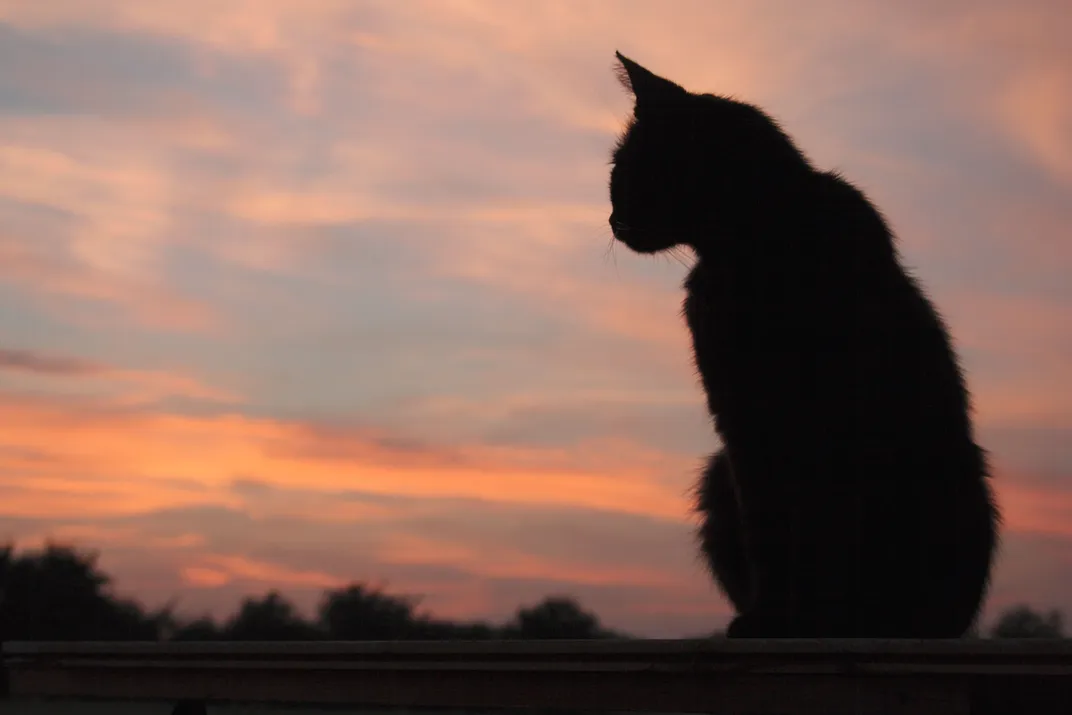
Science might be able to tell us how many animals cats kill per year. But it can’t tell us what that means—nor what we should do about it. It is us who attach moral weight to cats, by projecting our fear and fantasies upon them. Tibbles was “doing only what her instinct told her to do,” Marra writes. We make cats into pets or pests; victims or villains; those who suffer or those who cause suffering.
A dispute fueled by morals and animal loyalties
At the heart of this debate is a question not of data, but of aesthetics, principles and philosophies. That is: In a world fundamentally shaped by humans, who is to say whether birds and native wildlife have any more right to the landscape than domestic cats do? Should the goal be to rewind the urban landscape back to before the arrival of Europeans—and is that even possible?
Conservation biologists have always called these kinds of shots themselves. “We’ve made a judgment that biodiversity is good,” says Temple. For Marra, cats represent yet another destructive footprint man has made on the landscape. To rid the country of their presence is therefore to restore some pre-human balance of nature, some lost sense of grace. It is to protect those creatures that cannot save themselves. “It is essential,” he says, “that we save these species.”
In his closing chapter, Marra warns that Americans may soon awaken to dead birds and “muted birdsong, if any at all.” It’s another nod to Rachel Carson, whose defense of nature helped spark the modern environmental movement. Today we’ve come to recognize Carson as an environmental Cassandra; history has vindicated many of her inconvenient truths. But when Silent Spring first came out, her ideas were met with hostility from other scientists, who deemed her hysterical, alarmist and “probably a Communist.”
For Marra, it is clear that outdoor cats represent the Silent Spring of our time. Not only are cats the single worst threat to birds caused directly by humans, but they are also the easiest problem to fix, as compared to many-leveled threats like climate change. For him, it is obvious what we must do. Yet he is also starting to understand the challenge of making others see the world as he does. “To me, this should be the low-hanging fruit,” he says. “But as it turns out, it might be easier stopping climate change than stopping cats.”
/https://tf-cmsv2-smithsonianmag-media.s3.amazonaws.com/accounts/headshot/HeadshotGross_Web.jpg)
/https://tf-cmsv2-smithsonianmag-media.s3.amazonaws.com/accounts/headshot/HeadshotGross_Web.jpg)